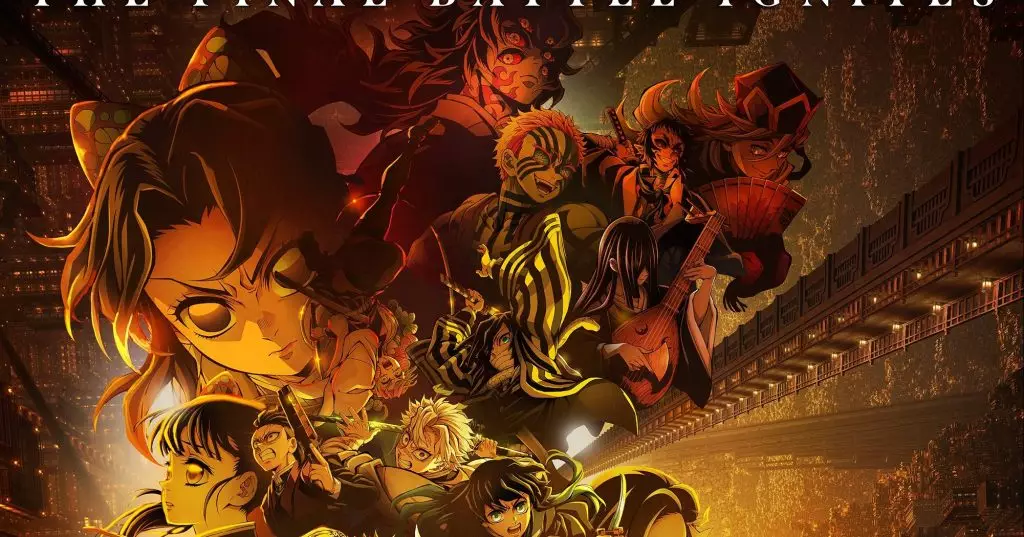The recent release of “Demon Slayer: Infinity Castle” has sparked a seismic shift within Japan’s entertainment landscape. With opening days shattering box office records and setting new benchmarks, this film’s explosive debut signals more than mere popularity—it exposes the industry’s reckless over-reliance on franchise-driven revenue. The staggering attendance figures surpass even the boldest expectations, with over 3.8 million moviegoers in just three days, grossing an eye-watering 5.52 billion yen. Such figures are not just indicative of a beloved series but highlight a cultural phenomenon that threatens to distort the diversity and innovation that have traditionally defined Japanese cinema.
While some applaud these successes as evidence of anime’s burgeoning global influence, they also raise critical concerns about the sustainability of this model. Are we witnessing the blossoming of a vibrant industry, or is this spectacle symptomatic of a dangerous move toward saturation? The obsession with record-breaking numbers might seem exhilarating, but beneath the surface, it feeds into a cycle where studios prioritize franchises that guarantee quick profits rather than investing in fresh narratives or experimental projects. This phenomenon risks creating a cultural monoculture that stifles artistic growth and reduces anime to a safe, commercially viable product—not a groundbreaking art form.
Economic Implications and Industry Power Dynamics
The enormous financial success of “Infinity Castle” underscores a troubling trend in the global anime industry—consolidation of power in the hands of major studios and distributors. With Sony and Crunchyroll orchestrating international releases, the global reach of this franchise signifies an unprecedented scale of commercial exploitation. This isn’t merely about entertainment; it’s about controlling cultural assets and shaping audience consumption patterns.
Such consolidation can lead to homogenization, where creative risks are sacrificed in favor of reliable franchise universes that guarantee box office returns. Smaller studios and independent creators are increasingly marginalized in a landscape dominated by colossal franchises like “Demon Slayer,” often finding it impossible to compete without major backing. This imbalance threatens the diversification of anime’s creative voice—what was once a medium of innovation now risks becoming a conveyor belt for established brands designed to milk maximum revenue rather than push artistic boundaries.
Furthermore, the explosion of box office figures often obscures the true cultural significance of these works. It’s tempting to measure success solely by revenue, but this narrow view neglects how these narratives shape societal values and cultural identity. When a franchise dominates the cultural conversation so thoroughly, it can inadvertently marginalize other voices and stories that might challenge or expand existing paradigms.
The Cultural Cost of Commercial Dominance
The enormous commercial success of “Infinity Castle” also highlights a complex cultural issue: the risk of anime becoming a transactional cultural artifact. When a franchise commands such a massive audience, its influence extends beyond entertainment—shaping perceptions of heroism, morality, and community. When consumers become conditioned to expect and revere these blockbuster events, genuine artistic risk-taking diminishes. Instead, studios chase the next record-breaking hit, preoccupied with metrics rather than meaningful storytelling.
This commercial obsession also raises questions about artistic integrity. Are these films reflective of authentic creative visions, or are they meticulously crafted products made to capitalize on existing fanbases? The answer likely varies, but the dominant narrative suggests a focus on safety and profitability over innovation. There’s a danger that the industry’s artistic evolution could stall, with creators incentivized to adhere to proven formulas rather than push boundaries or challenge audiences.
Moreover, the international push to propagate “Demon Slayer”—including scheduled global releases—might exacerbate cultural homogenization. When a specific cultural product becomes a global commodity, it risks losing some of its unique regional flavor, becoming instead a sanitized, commodified version of itself designed to appeal universally. This trend threatens to dilute the cultural diversity that has historically made anime a vibrant tapestry of stories rooted in Japanese tradition, mythology, and societal values.
How the Center-Left Can Advocate for Balance
From a center-wing liberal perspective, the rise of “Demon Slayer” presents both opportunities and challenges. While celebrating the global success of innovative anime, there is a responsibility to advocate for a balanced industry that encourages diversity and artistic experimentation. Supporting policies and industry practices that foster the growth of independent creators, regional storytellers, and experimental projects can help prevent this trend from devolving into a monopoly of safe, profit-driven franchises.
It’s also crucial to promote cultural policies that prioritize artistic integrity over purely commercial interests. This means funding and recognition for projects that challenge conventions, reflect diverse voices, and explore complex themes beyond the narrow scope of blockbuster formulas. Encouraging a broader ecosystem within the anime industry will ensure its long-term vibrancy and relevance in a rapidly changing cultural landscape.
Balanced regulation and support structures can work hand-in-hand with international platforms to ensure that anime’s evolution is driven by creativity, not just capital. Moreover, fostering a cultural dialogue that values artistic depth alongside commercial success can help preserve anime’s identity as a unique, influential art form—one capable of challenging audiences and inspiring society to think differently about storytelling, morality, and community.


Leave a Reply